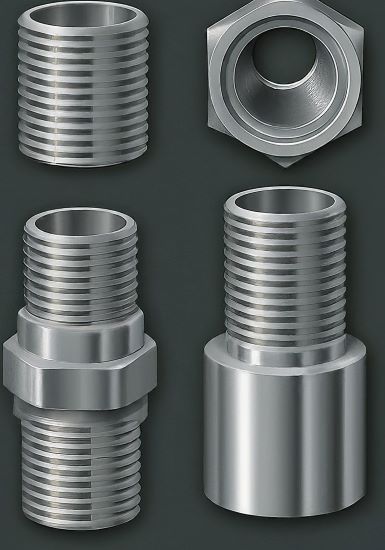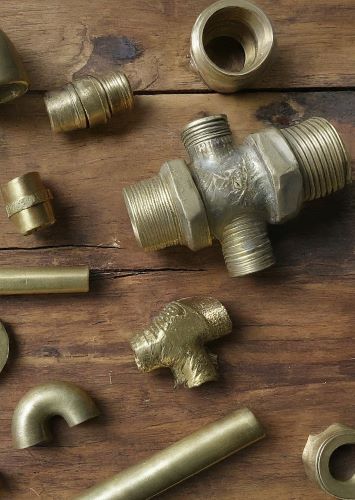Choosing the right fittings is crucial for any plumbing project. Brass and stainless steel are two common materials. But which one reigns supreme?
This blog post will delve into the properties, advantages, and disadvantages of both materials to help you make an informed decision.
Stainless Steel Fittings
Stainless steel is renowned for its durability, corrosion resistance, and ability to withstand high temperatures. There are various grades of stainless steel, each with different properties suited for specific applications in fittings. For instance, grade 304 is commonly used for its general corrosion resistance, while grade 316 offers superior resistance to chlorides, making it ideal for marine environments.
Advantages of Stainless Steel Fittings:
➡️ Longevity: Stainless steel fittings are built to last, offering a longer lifespan compared to brass.
➡️ Harsh Environments: They excel in demanding conditions like outdoor plumbing and marine applications due to their exceptional resistance to rust and corrosion.
➡️ Minimal Maintenance: Stainless steel requires minimal upkeep, saving you time and money in the long run.
➡️ Aesthetics: The sleek, modern look of stainless steel complements various design styles.
➡️ Compatibility: These fittings can be used with a variety of pipe materials, offering versatility in your project.
Disadvantages of Stainless Steel Fittings:
➡️ Cost: Generally speaking, stainless steel is more expensive than brass.
➡️ Pitting Corrosion: Under specific circumstances, like exposure to concentrated chlorides, stainless steel can be susceptible to pitting corrosion.
Brass Fittings
Brass is valued for its workability, malleability, and affordability. Different types of brass are used for fittings, each with varying lead content. For potable water applications, lead-free brass is the recommended choice.
Advantages of Brass Fittings:
➡️ Budget-Friendly: Brass is a cost-effective option compared to stainless steel.
➡️ Easy Installation: Brass fittings are generally easier to work with and install due to their softer nature.
➡️ Machinability: Brass offers good machinability, making it suitable for intricate fitting designs.
➡️ Aesthetics: Brass has a classic and timeless appeal that can enhance the look of exposed plumbing.
Disadvantages of Brass Fittings:
➡️ Corrosion Resistance: While offering decent corrosion resistance, brass doesn’t match the exceptional performance of stainless steel.
➡️ Pressure and Temperature: Brass fittings may not be suitable for high-pressure or high-temperature applications.
Choosing Between Stainless Steel and Brass Fittings
Several factors influence the choice between stainless steel and brass fittings:
➡️ Project Budget: Brass is the more economical option, while stainless steel offers a long-term value proposition.
➡️ Pipe Material: Ensure compatibility between the fitting material and your chosen pipe material.
➡️ Pressure Requirements: For high-pressure systems, stainless steel is the superior choice.
➡️ Operating Temperature: High-temperature applications necessitate stainless steel fittings.
➡️ Environment: For harsh environments prone to corrosion, stainless steel reigns supreme.
When to Choose Stainless Steel Fittings
➡️ High-pressure systems: They can handle the increased pressure without compromising integrity.
➡️ Outdoor plumbing: Their exceptional corrosion resistance makes them ideal for withstanding the elements.
➡️ Marine applications: Stainless steel fittings excel in saltwater environments due to their superior resistance to chlorides.
When to Choose Brass Fittings
1. Residential plumbing: For typical household plumbing applications with moderate pressure and temperature, brass is a cost-effective option.
2. Low-pressure systems: Brass performs well in low-pressure settings like water supply lines.
3. Applications requiring frequent adjustments: The ease of working with brass makes it suitable for situations where frequent adjustments might be needed.
Conclusion
Both stainless steel and brass fittings have their strengths and weaknesses. By understanding these key differences and considering your specific project requirements, you can make an informed decision about which material best suits your needs.
If you’re unsure, consulting with a professional plumber can provide valuable guidance.
Post time: Jun-21-2024



